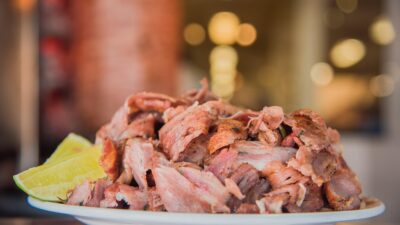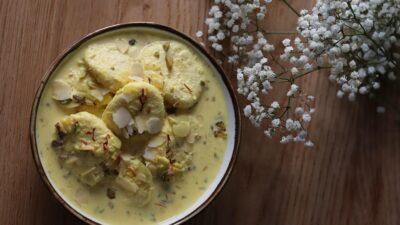Italian cuisine is renowned for its rich flavors, fragrant herbs, and comforting textures, much of which can be attributed to the sauces that accompany its beloved dishes. Mastering sauces is an art form that involves not just the right ingredients, but also an understanding of the science behind them. Let’s explore the classic Italian sauces, their components, and how the chemistry of food plays a crucial role in creating the authentic flavors we associate with Italian cooking.
Understanding Sauce Basics
At its core, a sauce is a liquid preparation that enhances a dish. The interplay of ingredients, acidity, and fat determines a sauce’s flavor profile and texture. The balance between these elements often dictates whether a sauce complements or overwhelms a dish.
Key Components of Sauces:
-
Base: The foundation of any sauce usually starts with aromatics like onions, garlic, or carrots sautéed in oil or butter. These ingredients release essential oils, adding depth of flavor.
-
Acidity: This is crucial in balancing flavors. Tomatoes, vinegar, and wines are common sources in Italian sauces, providing tanginess that cuts through richness.
-
Fats: Olive oil, butter, or animal fats carry flavors and add a silky mouthfeel. They also help dissolve fat-soluble vitamins, enhancing the nutritional profile of the dish.
- Seasoning: Herbs like basil, oregano, and parsley articulate the sauce’s personality, while salt and pepper elevate the overall flavor.
Classic Italian Sauces and Their Scientific Principles
1. Marinara Sauce
Ingredients: Tomatoes, garlic, olive oil, oregano, basil, salt.
Science: Marinara is a quintessential Italian sauce, relying heavily on tomatoes’ natural sugars and acidity. Cooking tomatoes releases their sugars, creating caramelization. Additionally, the Maillard reaction occurs when garlic is sautéed, intensifying its flavor and aroma. Olive oil acts as a medium, helping to release the aromatic compounds of the herbs.
2. Pesto
Ingredients: Fresh basil, garlic, pine nuts, Parmesan cheese, olive oil.
Science: Pesto is a cold sauce that embodies the fresh flavors of its ingredients. The emulsification of oil with the herbs and nuts creates a creamy texture. The enzymes in garlic help to break down components, releasing sulfur compounds that contribute to its pungent taste. The freshness of basil also contributes volatile aromatic compounds that invigorate the sauce.
3. Bolognese (Ragù)
Ingredients: Ground meat, tomatoes, onion, carrot, celery, wine, milk.
Science: The layering of flavors in Bolognese comes from the slow-cooking process. Browning the meat through the Maillard reaction enhances umami flavors, while the vegetables create a mirepoix base that adds sweetness and depth. The acidity from wine balances the fat from meat and milk, creating a harmonious sauce.
4. Alfredo Sauce
Ingredients: Butter, heavy cream, Parmesan cheese, garlic.
Science: Alfredo is rich and creamy, thanks to the emulsifying properties of butter and cream. When heated, the fat in the butter and the water in the cream combine, thickening the sauce and allowing for the flavors from garlic and cheese to meld beautifully. The result is a velvety sauce that clings to pasta perfectly.
5. Carbonara
Ingredients: Pasta, eggs, pancetta, Pecorino Romano cheese, black pepper.
Science: Carbonara’s creamy texture comes from emulsifying eggs and cheese with the pasta’s starches. The heat from the pasta gently cooks the eggs, forming a sauce rather than scrambling them. The key is to mix quickly and ensure even distribution, allowing the residual heat to create that iconic creamy consistency.
Tips for Mastering Italian Sauces
-
Quality Ingredients: Use fresh herbs, high-quality olive oil, and ripe, in-season tomatoes for the best flavor.
-
Patience in Cooking: Many sauces benefit from slow cooking to develop flavors, so avoid rushing through the process.
-
Season as You Go: Build flavor by seasoning at each step. This approach ensures a well-balanced final sauce.
-
Experiment with Textures: Adjust the thickness of your sauce by varying the cooking time or by adding pasta water to achieve the desired consistency.
- Taste and Adjust: Let your palate guide you as you season and balance flavors. Each ingredient may vary, so tasting as you go is essential.
Conclusion
The art of making Italian sauces is a flavorful journey steeped in tradition, science, and creativity. By understanding the components and chemical reactions that occur during cooking, anyone can elevate their culinary skills and produce authentic Italian flavors in their kitchen. Whether you’re simmering a robust Bolognese or blending a fresh pesto, the journey into the world of sauces is not only about taste; it’s a celebration of the science that makes cooking both an art and a science. So grab your ingredients, unleash your creativity, and let the sauces shine!



